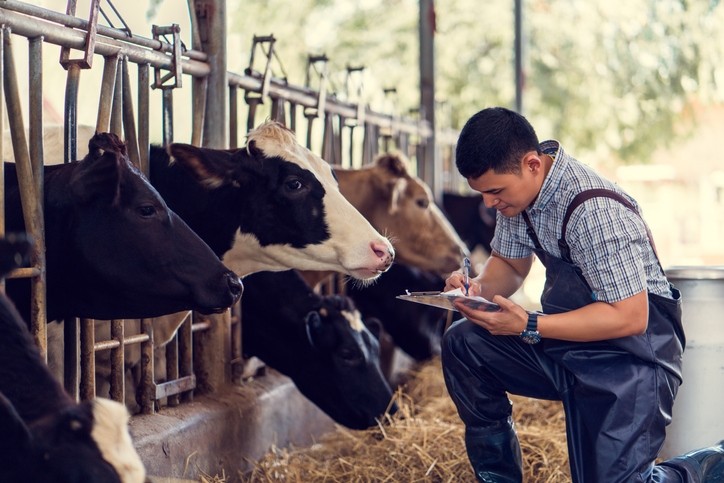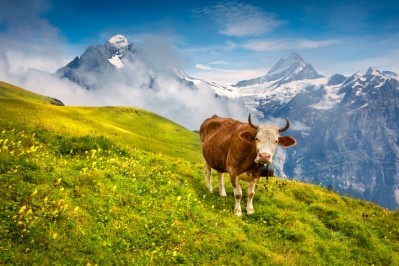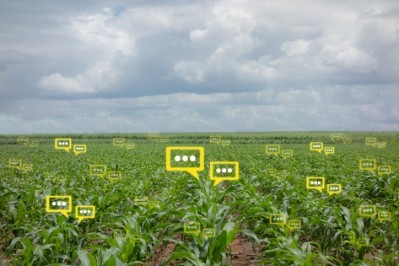Feed production practices play role in Ben & Jerry’s sustainability efforts

The Vermont-based ice cream and dairy company announced earlier this month that it had established a Dairy Advisory Council to support and expand its work in values-led dairy.
The company has been involved with sustainability efforts and social and environmental justice causes for several years, said Cheryl Pinto, values-led sourcing manager with Ben & Jerry’s. “We recognize that we’ve done good work with Vermont farmers to date, but we also realize that the sector is really under a lot of pressure,” she added.
“It’s increasingly complex, and at the same time it’s so important that consumers know where their dairy is coming from,” she told us. “We felt that with the council we can take the program that we have to date, which has been best practices, and shift the lens toward outcomes-based [efforts] and work with them to be progressive.”
The council is intended to help Ben & Jerry’s meet its long-term values-led dairy vision, which includes supporting thriving livelihoods for dairy producers and their employees; progressive animal care; growing ecological feed or feed that is healthy for the ecosystem; and improving farm practices to sequester carbon, she said.
“The council covers animal welfare, there is a grazing expert and someone who knows about pesticides to make sure that that we push ourselves and so we don’t just settle for what is easy and status quo,” she said.
Dairy council project
The company’s sustainability efforts and interaction with the newly establish council also are intended to examine areas that need to be addressed for the company to have the outcomes intended through the sustainability program, said Pinto. The new group also is intended to help the company develop a potential road map for producers and possibly the larger industry.
Council members include Dorn Cox, and organic producer and research director with Wolfe’s Neck Center for Agriculture and the Environment; Heather Darby, extension professor and agronomy specialist at the University of Vermont; Scott Faber, environmental advocate; Sarah Flack, livestock production consultant; Leah Garces, president of animal rights’ organization Mercy for Animals; and Gary Kjelleren, chair with the water quality organization the Lake Champlain Committee.
Currently, members are still in the process of “onboarding” to provide them a better understanding of the work Ben & Jerry’s has already done, said Pinto. “We’re anticipating it’s a multi-year relationship – the goal is through this year we’ll start to really identify what the road map will look like with key milestones,” she added.
Going forward the effort is intended to address the overall effect that the company intends to have, she said. This includes addressing elements like supporting thriving livelihoods for industry members, “happy and healthy animals, healthy soils, clean water,” and ensuring that the dairies involved are examples of solutions to industry challenges not the cause of problems.
Throughout the year, members of the council will have the chance to help establish a long-term goal and work backward to set the interim points that need to be met, she said.
Feed production and sustainability efforts
Feed production continues to be a factor for the dairy company because many producers in its region generate 50% or more of the feed they use on site, said Pinto.
The focus, thus far, has been on supporting regenerative agricultural practices, she said. “In the last few years, we’ve really been working with farmers on their cropping practices … cover cropping, no-till and crop rotation, to address how they grow their feed on site,” she added.
“We are interested in moving toward a non-GMO supply chain, but we don’t have a strict time frame around that yet,” she said. “We’ve been working with industry groups about increasing the viability of non-GMO feeds so that it’s at a scale, an availability and accessibility for farmers especially here in the northeast, but our focus, for now, will be looking more closely at how farmers are growing their feed.”
The company also is doing some research regarding cover crop use and options as there can be challenges in monetizing and herbicide use with such crops, she said.
“At this point, there is not too much that has commercial value either for the farmers to put in a ration or to sell in another market, but it is something we want to explore,” she said. “We know it happens in other areas and it would add to the diversification factor for the farmers and be a second revenue stream or a cost reduction.”
Through the company’s Caring Dairy program, Ben & Jerry’s works with producers from a dairy cooperative who volunteer to take part in a tiered incentive program focused on best practices and continuous improvement, she said. “It looks more holistically at farm operations,” she added.
The program includes elements of treatment standards for cows, farmers and farm workers and standards for “planet stewardship,” the company said. The stewardship side of the program includes elements like the use of cover crops, testing before adding soil inputs, environmental monitoring and manure storage and spreading.
“We try to look at the whole operation even at the GHG emissions and all of the different pieces of work come together to help the farmland at the appropriate level and then they’re rewarded, but it’s a volunteer program,” she said. “We ask farms to sign up, but once they sign up then they’ve got these requirements that they need to meet.”










